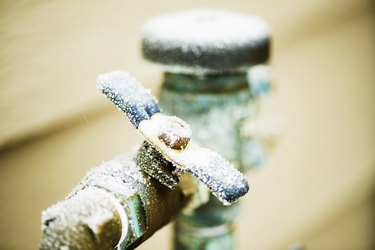Tips for Preventing Frozen Pipes in Winter: Expert Advice
Tips for Preventing Frozen Pipes in Winter: Expert Advice
Blog Article
Just how do you feel about Winter Plumbing Precautions: Preventing Frozen Pipes?
:strip_icc()/snow-outdoor-faucet-pipes-4af65d1e5e904fb1aa7bf74071fe5d89.jpg)
Cold weather can damage your pipes, specifically by freezing pipelines. Below's just how to stop it from happening and what to do if it does.
Introduction
As temperature levels drop, the threat of frozen pipelines boosts, possibly causing expensive repair work and water damage. Understanding just how to stop frozen pipelines is critical for house owners in chilly environments.
Comprehending Icy Pipes
What causes pipelines to freeze?
Pipelines ice up when subjected to temperatures listed below 32 ° F (0 ° C) for extended durations. As water inside the pipelines ices up, it expands, putting pressure on the pipeline walls and potentially creating them to rupture.
Dangers and problems
Frozen pipelines can result in water system interruptions, home damages, and costly repairs. Ruptured pipes can flood homes and trigger comprehensive structural damage.
Signs of Frozen Water Lines
Recognizing icy pipelines early can stop them from breaking.
Just how to recognize icy pipelines
Seek reduced water flow from faucets, uncommon smells or sounds from pipes, and noticeable frost on subjected pipes.
Avoidance Tips
Shielding prone pipes
Cover pipes in insulation sleeves or make use of warmth tape to safeguard them from freezing temperature levels. Concentrate on pipelines in unheated or exterior locations of the home.
Heating methods
Keep interior spaces appropriately heated, particularly areas with pipes. Open up cabinet doors to allow cozy air to circulate around pipes under sinks.
Safeguarding Outside Plumbing
Yard hoses and outside faucets
Detach and drain pipes yard hose pipes before wintertime. Set up frost-proof faucets or cover outdoor taps with shielded caps.
What to Do If Your Pipes Freeze
Immediate activities to take
If you presume frozen pipelines, maintain faucets open to soothe stress as the ice thaws. Use a hairdryer or towels soaked in hot water to thaw pipelines slowly.
Long-Term Solutions
Structural changes
Think about rerouting pipes away from exterior wall surfaces or unheated areas. Add added insulation to attic rooms, basements, and crawl spaces.
Upgrading insulation
Buy top notch insulation for pipes, attic rooms, and walls. Correct insulation helps preserve consistent temperatures and minimizes the risk of icy pipelines.
Conclusion
Stopping icy pipelines requires positive actions and fast feedbacks. By understanding the causes, indicators, and preventive measures, house owners can secure their pipes throughout winter.
6 Proven Ways to Prevent Frozen Pipes and Protect Your Home
Disconnect and Drain Garden Hoses
Before winter arrives, start by disconnecting your garden hoses and draining any remaining water. Close the shut-off valves that supply outdoor hose bibs and leave the outdoor faucet open to allow any residual water to drain. For extra protection, consider using faucet covers throughout the colder months. It’s also important to drain water from any sprinkler supply lines following the manufacturer’s directions.
Insulate Exposed Pipes
Insulating your pipes is an effective way to prevent freezing. Pipe insulation is readily available at home improvement stores and is relatively inexpensive. Pay close attention to pipes in unheated areas such as the attic, basement, crawl spaces, or garage. Apply foam insulation generously to create a buffer against the cold. You can also wrap your pipes in heat tape or thermostat-controlled heat cables for added warmth.
Seal Air Leaks
Inspect your home for any cracks or openings that could let in cold air. Seal any holes around the piping in interior or exterior walls, as well as the sill plates where your home rests on its foundation. Additionally, make sure to keep your garage door closed unless you’re entering or exiting. Leaving it open creates a significant air leak that can lead to frozen pipes.
Allow Warm Air Circulation
During cold snaps, it’s essential to allow warm air to circulate evenly throughout your home. Leave interior doors ajar to promote better airflow. Open kitchen and bathroom cabinets to help distribute heat consistently around the rooms. If you have small children or pets, be sure to remove any household chemicals or potentially harmful cleaners from open cabinets for safety.
Let Faucets Drip
A small trickle of water can make a big difference in preventing ice formation inside your pipes. When temperatures drop significantly, start a drip of water from all faucets served by exposed pipes. This continuous flow helps prevent the water from freezing. Additionally, running a few faucets slightly can relieve pressure inside the pipes, reducing the chances of a rupture if the water inside does freeze.
https://choateshvac.com/6-proven-ways-to-prevent-frozen-pipes-and-protect-your-home/

We were made aware of that editorial on Prevent Frozen Pipes through a good friend on a different web address. Enjoyed our piece? Please share it. Help others find it. Thanks a lot for your time invested reading it.
Call Today Report this page